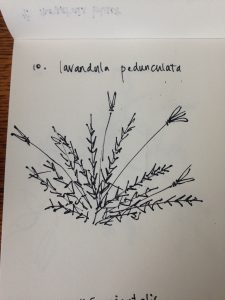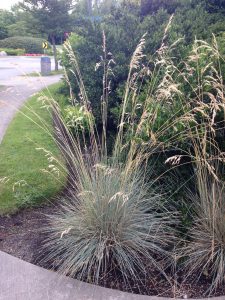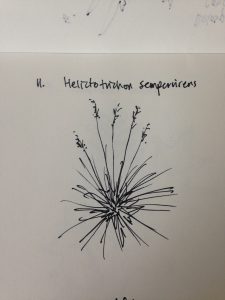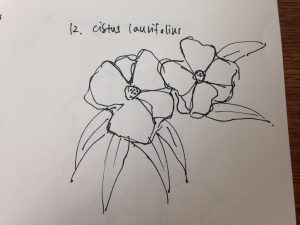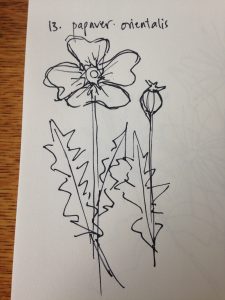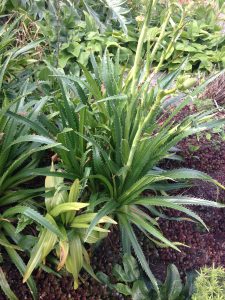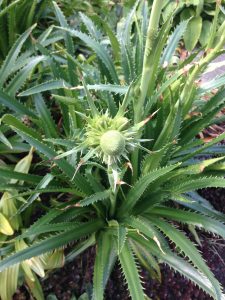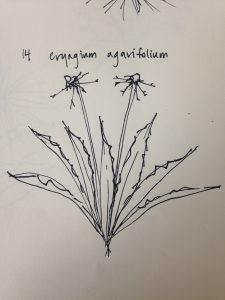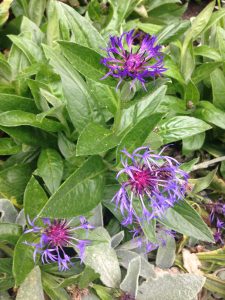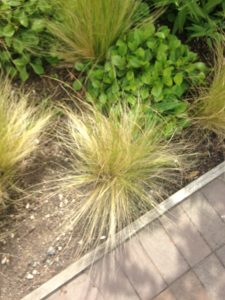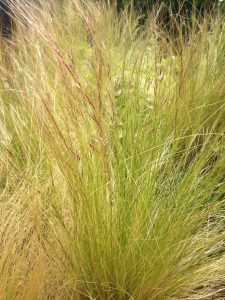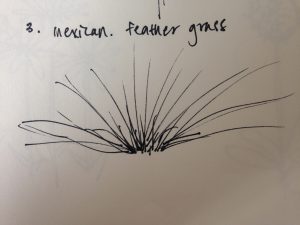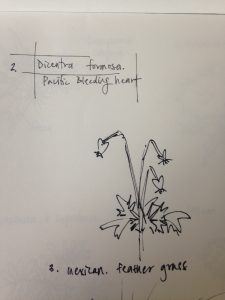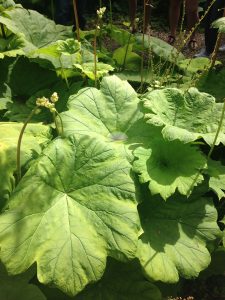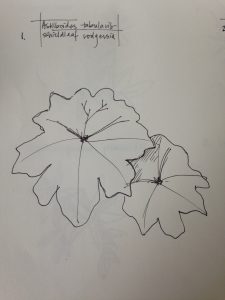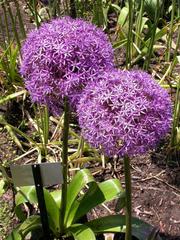

(missouribotanicalgarden.org)
Common name: Star of Persia
Size, form, texture: height 1-2 ft, spread 0.5-1.5 ft, dense slowly spreading clumps, doesn’t tend to naturalize.
Hardiness, origin, native ecology: requires good drainage, grows well in sunny areas, native to northern Iran and Georgia, seeds produced in 5 chambered capsule, bulb perennial, dry to medium water use. Z 4-8
Bud, foliage, flower and fruit characteristics: spherical, lavender coloured globular flowerhead, sparse stem with green lush foliage at base. Seed heads dry well after bloom.
Cultural and maintenance requirements and appropriate uses in the landscape: low maintenance, largest flowering head of any onion family, fairly hardy, ornamental onion for rock gardens, beds and borders, containers, or cut flowers. Attractive and interesting, unique, stand out in a garden.

